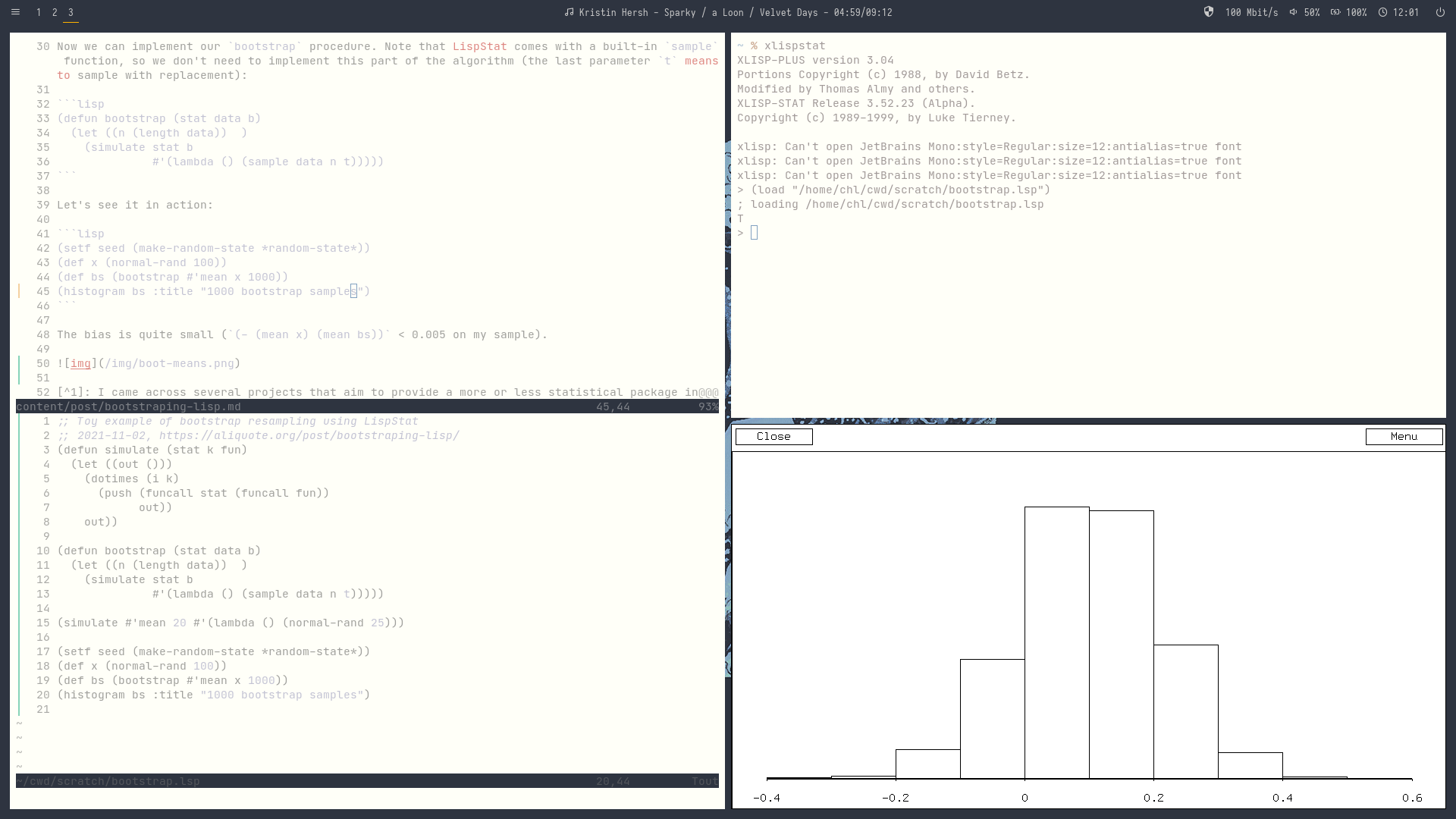Bootstrap resampling in Lisp
After reading some recent posts written by Atabey Kaygun, I thought I would go back to my old LispStat code to see whether it is still a thing.1 Back at that time I started to write tutorials about LispStat. It was 10 years ago, and long after the R’s era, that I learned some LispStat, and I even bought the book. I’m actually using xlispstat version 3.52.23, which I installed from GitHub.
Today, we’ll do some bootstrap resampling. First, we need a little helper function to compute a given statistic on a sample data $b$ times:
(defun simulate (stat k fun)
(let ((out ()))
(dotimes (i k)
(push (funcall stat (funcall fun))
out))
out))
Let’s test it using this simple instruction:
(simulate #'mean 20 #'(lambda () (normal-rand 25)))
Note that we could easily write a little procedure to compute the estimated slope of a linear regression model and plug it in place of the mean function above, like I did in an R example.
Now we can implement our bootstrap procedure. Note that LispStat comes with a built-in sample function, so we don’t need to implement this part of the algorithm (the last parameter t meansto sample with replacement):
(defun bootstrap (stat data b)
(let ((n (length data)) )
(simulate stat b
#'(lambda () (sample data n t)))))
Let’s see it in action:
(setf seed (make-random-state *random-state*))
(def x (normal-rand 100))
(def bs (bootstrap #'mean x 1000))
(histogram bs :title "1000 bootstrap samples")
The bias is quite small ((- (mean x) (mean bs)) < 0.005 on my sample).

I came across several projects that aim to provide a more or less statistical package in Lisp or Scheme. The later one is lisp-stat, which does not offer much at the time of this writing. The name of the project itself, with part of the code re-copyrighted after AJ Rossini or Luke Tierney under a different licence, makes me wonder where this project is going on, but this has already been discussed on HN. Anyway, if we get something close to Luke Tierney’s LispStat in Common Lisp, why not. ↩︎